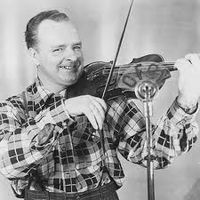Annotation:Little Judique Reel
X:1 T:Little Judique Reel M:C| L:1/8 R:Reel K:D a^g ab a2f2|d2A2A2fg|a^g ab a2f2|d6ef| gf ga g2e2|c2A2c2ef|gf ga g2e2|c4f3g| a^g ab a2f2|d2A2A2fg|a^g ab a2f2|d4g3a| b2gb a2fa|g2eg f2ed|c2Ac a2c2|d4c3d|| K:A |:e4e3f|e2c2B2A2|ag ab a2f2|e4f3g|a3ba2f2 | e2c2a2f2 |1 e2c2B2A2 | B4B2cd :|2 e2c2B2c2| A4f3=g |]
LITTLE JUDIQUE REEL. Canadian, New England; Reel. D Major ('A' part) & A Major ('B' part). Standard tuning (fiddle). ABB' (Miller & Perron): AABB' (Messer): AA'BB' (Songer). The tune comes from the playing of Canadian fiddler Don Messer [1] [2] (1909-73), a professional fiddler, music director, music writer and entertainer. He formed his band in the 1920's, perfected his sound by the late 1930's, and continued with it virtually unchanged until the end of his career around 1970. From 1956 to 1969 he had his own show on Canadian television, hugely popular in its hey-day.

The melody is distinctively Canadian, and displays Quebecois influence in the melody, although the source for the tune (other than Messer) is unknown. See also a jig setting as "Queen's Marriage (The)."

